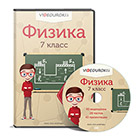
Nuclear physics
Presentation prepared:
candidate of physical and mathematical sciences Zhubayev A. K master student Bersieva M.E.
A ktobe 2018

Properties of nuclear forces. Fundamentals of the theory of nuclear forces. Models of atomic nuclei
Between the nucleons that make up the nucleus there are special forces, specific for the nucleus, considerably exceeding the Coulomb repulsive forces between the protons. They are called nuclear forces.
With the help of experimental data on the scattering of nucleons by nuclei, nuclear transformations, etc. It is proved that nuclear forces far exceed gravitational, electrical and magnetic interactions and do not reduce to them. Nuclear forces belong to the class of so-called strong interactions.


The main properties of nuclear forces:
1) nuclear forces are forces of attraction;
2) the nuclear forces are short-range - their effect is manifested only at distances of about 10-15 m. As the distance between nucleons increases, the nuclear forces rapidly decrease to zero, and at distances shorter than their range, about 100 times more Coulomb forces acting between protons at the same distance;
3) nuclear forces are characterized by charge independence: the nuclear forces acting between two protons, or two neutrons, or, finally, between a proton and a neutron, are the same in magnitude. It follows that nuclear forces are non-electrical in nature;

The main properties of nuclear forces:
4) the nuclear forces are characterized by saturation, i.e. each nucleon in the nucleus interacts only with a limited number of nucleons closest to it. Saturation is manifested in the fact that the specific binding energy of nucleons in the nucleus (if we do not take into account the light nuclei) does not increase with an increase in the number of nucleons, but remains approximately constant;
5) the nuclear forces depend on the mutual orientation of the spins of the interacting nucleons. For example, a proton and a neutron form a deuteron (the nucleus of an isotope H) only under the condition of a parallel orientation of their spins;
6) nuclear forces are not central, that is, acting along a line connecting the centers of interacting nucleons.

The complex nature of the nuclear forces and the difficulty of accurately solving the equations of motion of all nucleons of the nucleus (a nucleus with a mass number A is a system of A bodies) have not allowed to develop a single consistent theory of the atomic nucleus to date.
Approximate nuclear models are considered in which the core is replaced by a model system that describes quite well only certain properties of the nucleus and admits a more or less simple mathematical interpretation.
Of the large number of models, each of which necessarily uses selected arbitrary parameters, consistent with experiment, the main ones are drop and shell.


The microscopic theory of the nucleus proceeds from the general idea of the nucleus as a system of many strongly interacting nucleons.
The main purpose of the theory is to justify nuclear models and indicate areas of their applicability.
In collective models, the degrees of freedom that correspond to the correlated motion of a large number of nucleons are taken into account. They are also called nuclear models with strong interactions. Here, the nucleus is likened to a liquid or a solid.
Single-particle models take into account the degrees of freedom that describe the motion of individual nucleons. Sometimes called models of non-independent particles. Each particle is considered to move independently of the others in some self-consistent field, i.e. in the potential field created by the motion of all the nucleons of the nucleus. Here the nucleus approaches gas.
Generalized models use both collective and one-particle degrees of freedom. If we adhere to the same terminology, then they treat the nucleus as a two-phase system - a fluid cluster (or deformable solid) that is in dynamic equilibrium with its vapor.








Collective models
1 . Nuclear matter
He studies the properties of a hypothetical infinite continuous medium consisting of the same number of protons and neutrons, which interact through two-particle nuclear forces.
Applicability: calculation of the density and specific binding energy of nuclear matter, explanation of the saturation of nuclear forces, study of the excitation spectrum and some nuclear reactions.
2. Drip model (hydrodynamic model)
the nucleus is regarded as a droplet of a charged liquid (in the complicated version, as a drop of proton and neutron fluids), whose density is equal to the nuclear one. The basis is the density of nuclear matter, which testifies to its "incompressibility"; the proportionality of the binding energy of the nucleus to its mass component, similar to the proportionality of the evaporation energy of a liquid droplet to its mass; the saturation property of nuclear forces, analogous to the property of molecular forces in a liquid.
Applicability: description of the averaged dependence of the binding energy of the nucleus on Z and A, description of surface oscillations of spherical nuclei, qualitative explanation of fission of nuclei

3. The non-spherical model
postulates the ellipsoidal form of certain nuclei, considered as clusters of matter.
Here we take into account vibrational (as in the drop model) degrees of freedom, as well as rotational degrees of freedom that are absent in spherical nuclei.
Applicability: description of the lower rotational and vibrational levels of even-even nuclei, which have a non-spherical form. In order to explain the observed values of the moment of inertia, it is necessary to assume that the substance of the nucleus is a mixture of viscous and superfluid liquids, for which it is not fully involved in rotation.

Single-particle models
1 . Nuclear Fermi gas is the simplest one-particle model, called the statistical model (in the narrow sense)
the core is treated as an ideal Fermi gas of non-interacting nucleons. The volume of the gas is assumed to be equal to the volume of the core, but the surface effects are not taken into account.
Area of applicability: calculation of the depth of the effective nuclear potential well, qualitative explanation of the saturation of nuclear forces and the symmetry effect, description of the emission of particles as evaporation process, description of the momentum distribution of nucleons (important for understanding the features of the course of some nuclear reactions).
2 . Shell models
It is believed that the nucleons move independently of each other in a certain average potential field, created by the motion of all the constituent elements of the nucleus.
The actual interaction between nucleons is represented as the sum of the dominant effect of the self-consistent field on them and a sufficiently weak residual interaction.

Single-particle models
2. Shell models
Variants of models differ by methods of accounting for residual interactions.
In the original version, also called simply the shell model, the residual interaction is completely neglected. The remaining variants are united by the common name "shell models with pair correlations".
2A) shell model (without residual interaction)
It is assumed that the nucleons are affected only by a self-consistent field; they move completely independently.
Applicability: obtaining magic numbers, predicting the values of spins, parities and magnetic moments of the ground states of doubly magical nuclei and nuclei, differing from them by one nucleon (in one direction or another).

2B) a model of shells with phenomenological pairing
The residual interaction is taken into account in an extremely simple way: it is assumed without any justification that identical nucleons are combined in pairs with zero angular momentum and positive parity.
Scope: an explanation of the values of the spins and parities of all HH nuclei and almost all of the NN nuclei, an approximate calculation of the magnetic moments of almost all NN nuclei.
2B), the superfluid model
substantiates the basic assumption of the previous model at the microscopic level. It is based on the notion that specific forces with I = 0 + 1 act between two identical nucleons with equal absolute values and oppositely directed momenta of the pulse. to break such a pair requires an energy of the order of 1-2 MeV, which leads to the splitting of the energy surface into 3 separate surfaces.
Applicability: an explanation of the values of the spins and parities of the ground and many lower excited states of almost all nuclei.

2d) the model of shells with residual interaction
The most general variant of shell models, in which the potential of the residual interaction of nucleons is explicitly introduced. The type and parameters of the potential are selected in such a way as to achieve the highest agreement with empiricism. The model is complex from a mathematical point of view, which makes it possible to explain a large number of characteristics of nuclear levels and nuclear transformations.

Generalized models
These models combine the initial premises of collective and single-particle models.
It is believed that the nucleus is a clot of matter of one form or another, surrounded by several external nucleons. The behavior of the core is described by one of the collective models, the behavior of external nucleons is a self-consistent field with or without residual interaction.
1. Generalized model with weak interaction
The core is considered to consist of a continuous spherical a part of the spoon, described by a drop model, and a small number of external nucleons performing independent motions in the core field. The ability to be excited has both external nucleons and a core in which surface oscillations arise.
Interaction area: explanation of the spectrum of lower excitations of a small number of a part of nephewing nucleons .

Generalized models
2. A generalized model with strong interaction
It is found that the core consists of a core formed by nucleons of filled shells and external nucleons moving in the core field and interacting intensively with it. These nucleons can cause oscillation of the core and its deformation, i.e. change the self-consistent field, which in turn can become non-spherical, acquiring a quadrupole moment and the ability to rotate.
Scope: a description of the location and characteristics of a large number of low-lying levels (single-particle, vibrational and rotational) of many nuclei, an explanation of the encountered large quadrupole moments.
3. Generalized models of pair correlations
The residual interaction between external nucleons is taken into account. These models are classified in the same way as shell models with pair correlations.






































